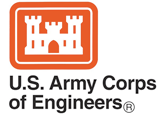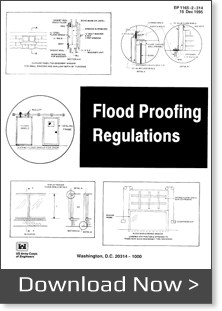Both the NFIP and the major national building code organizations rely on the US Army Corps of Engineers (USACE) for floodproofing standards.
What Constitutes 'Floodproofing'?
 |
| Katrina. FEMA News Photo. |
What exactly do we mean when we “flood proof” a building? FEMA has adopted the definition from the USACE publication “Flood Proofing Regulations.” This document states…
“…that a substantially impermeable wall shall not permit the accumulation of more than 4 inches of water depth during a 24-hour period if there were no devices provided for its removal. However, sump pumps shall be required to control this seepage.” Flood resistant materials, described in Technical Bulletin 2, “Flood-Resistant Materials Requirements,” must be used in all areas where such seepage is likely to occur.”
The USACE Flood Proofing Regulations (see link to download a PDF copy) deals only with the treatment of hydrostatic and hydrodynamic forces and waterproofing associated with riverine flooding only. To the extent that coastline structures are subject to these semi-static conditions, these provisions will be applicable to coastal or tidal flooding situations; however, no consideration is given to the special problems of wave impact, corrosion, and erosion associated  with coastal flooding.
with coastal flooding.


